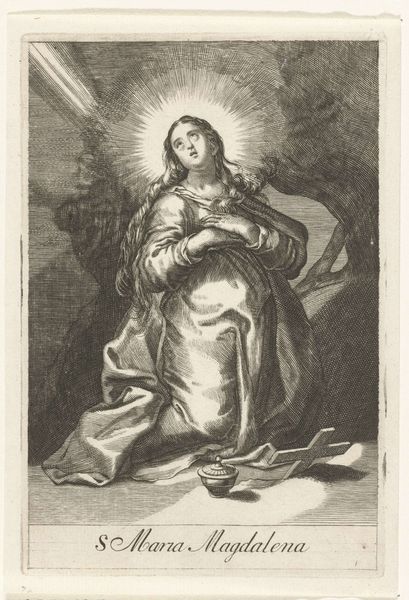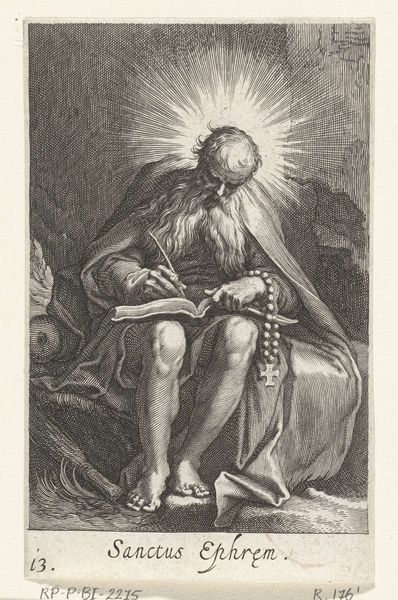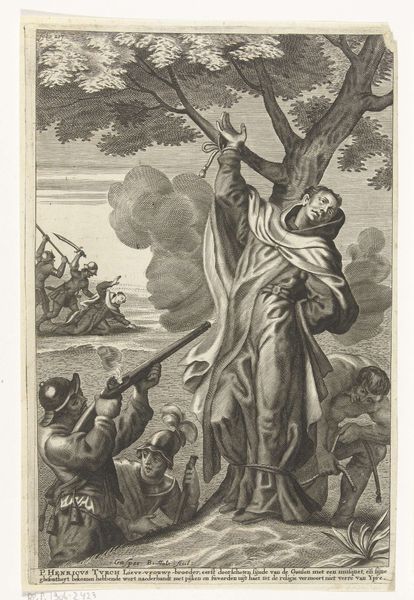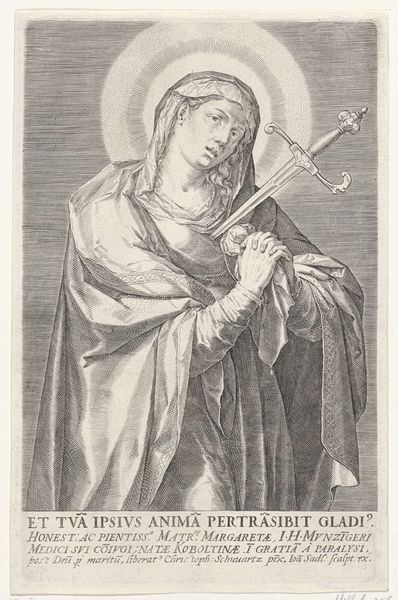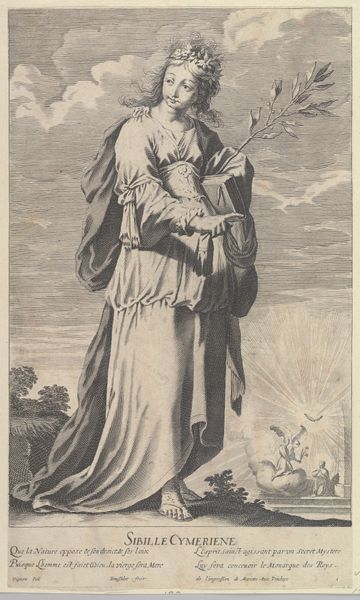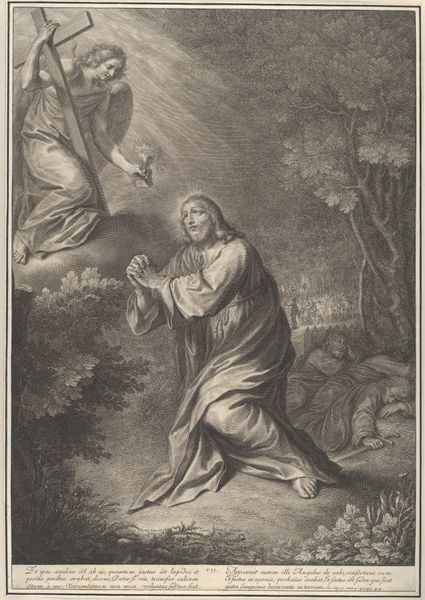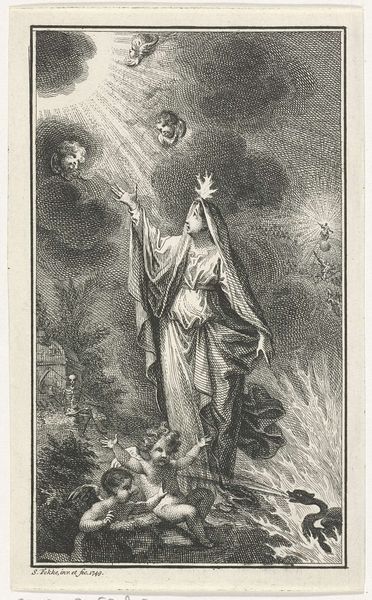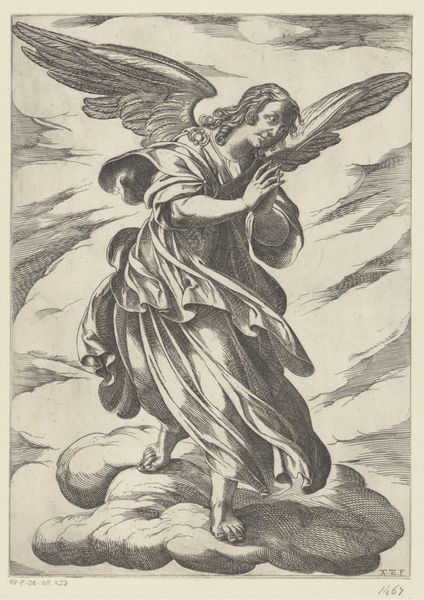
Heilige Catharina van Alexandrië met palmtak, zwaard en gebroken wiel 1610 - 1614
0:00
0:00
boetiusadamszbolswert
Rijksmuseum
print, engraving
#
portrait
#
allegory
#
baroque
# print
#
old engraving style
#
portrait drawing
#
history-painting
#
engraving
#
sword
Dimensions: height 214 mm, width 134 mm
Copyright: Rijks Museum: Open Domain
Curator: Immediately, the high contrast and the light emanating from behind the saint creates a theatrical, almost dramatic effect. The strong diagonal lines add dynamism, don’t you think? Editor: Yes, the piece does carry a certain...gravity. This is "Saint Catherine of Alexandria with Palm Branch, Sword and Broken Wheel" created sometime between 1610 and 1614 by Boëtius Adamsz. Bolswert. The print depicts a moment steeped in legend, martyrdom, and perhaps, even female resistance against patriarchal power. Curator: Indeed, look closely at the balance: The saint, beautifully rendered with a light source placed at her back; she commands the visual space with its precise use of hatching and cross-hatching to give it volume and tone. I wonder what you make of this Baroque structure? Editor: Well, in placing the broken wheel and sword – instruments of her attempted execution – so prominently at her feet, Bolswert uses her iconic emblems as tools of defiance. The angel descending with the victor's laurel speaks of divine validation of her struggle, I suppose, situating this narrative of female faith within a society wrestling with religious and social upheaval. Curator: You highlight the iconographical narrative effectively, of course. The artistry on the face of the saint is fascinating, though; a certain rapture seems captured with an expressive appeal to our perception of texture and form. We see the semiotic articulation of suffering within these purely visual terms. Editor: But it's not merely about religious suffering! Saint Catherine becomes an archetype for resilience in the face of oppressive authority, regardless of our personal relationship to faith itself. It certainly underscores a kind of radical feminist statement from a time mired in strict hierarchical norms. The power dynamic at work! Curator: Fascinatingly argued. Regardless of its context, the way Bolswert uses these techniques to define this subject within the canon shows real engagement. Editor: Absolutely. Viewing this print opens us to not only the past, but provides insight and a language to advocate for future acts of resilience against inequity.
Comments
No comments
Be the first to comment and join the conversation on the ultimate creative platform.
